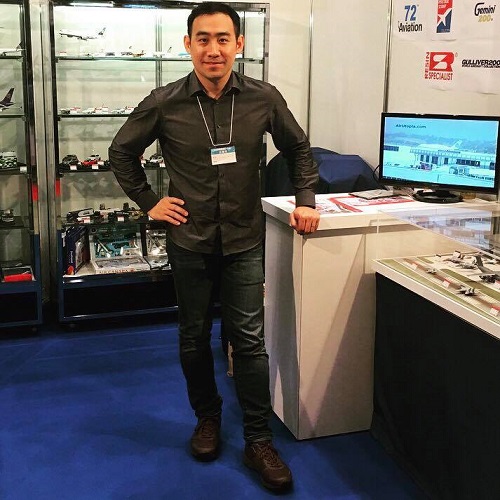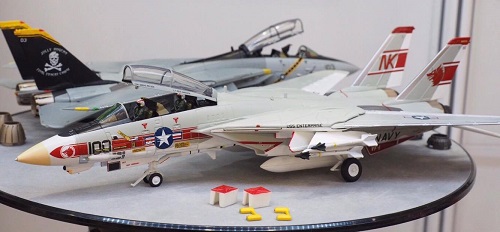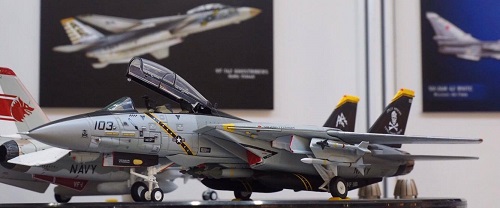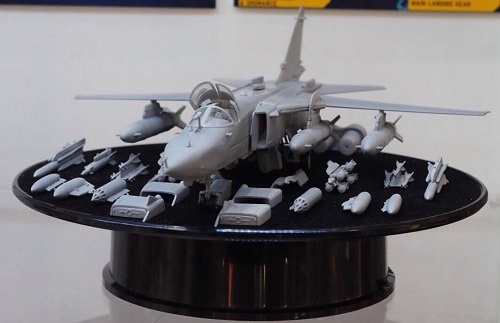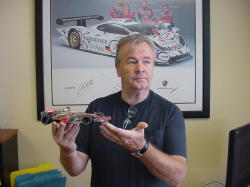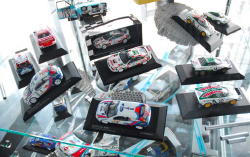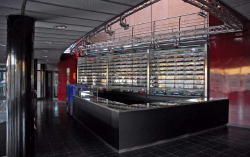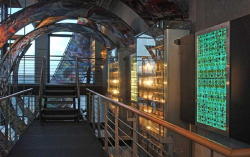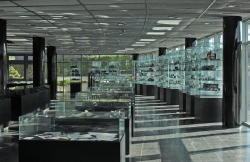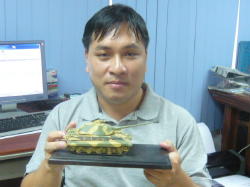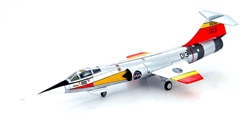Manufacturer Interviews
Manufacturer Interviews
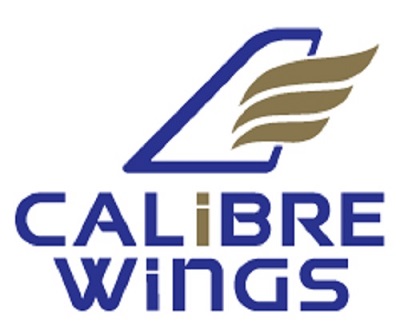
Calibre Wings
992-998 Canton Road
Officeplus@Mongkok
15 Floor Unit A2
Kowloon
Hong Kong
www.calibrewings.com/
Tel: +85223386327
Contact: Noel Lee
Noel Lee, Owner and Director of Operations, Calibre Wings
Growing up in a German-American family in the sixties and seventies, I was always struck by one stark message continually drummed into my head by my elders: "Persevere when others falter, achieve when no one thought it possible." While this short but somewhat poignant speech has stuck with me through the years, I couldn't help but recognize how it also applied to a newly found friend in the name of Noel Lee, the owner and director of the Hong Kong-based diecast start up, Calibre Wings. Formed just a couple of years ago, the Company has had to endure a long litany of design challenges and delays getting their latest product out the door, items that could well form the cornerstone of their lineup for the foreseeable future. These same items go a long way towards demonstrating their dedication to their craft amidst the turmoil of production, and the length to which they are prepared to go to impress and hopefully gain favor with the diecast community. What follows is an interview we conducted with Noel back in December, at a time when the Company learned that they would likely miss yet another release deadline. Despite the tumult, they still kept their heads high knowing that the finished product would justify the lengthy wait for all concerned.
The Motor Pool (TMP): Could you describe your background and why you decided to get involved with the making of diecast collectibles?
Calibre Wings (CW): From my early teens, which was during the 1st Gulf War, I was into plastic aircraft models. In fact, even before that, when I was younger, my first model kit was a LS 1/144 F-14 "Jolly Rogers". I took the hobby quite seriously and purchased an airbrush, an air compressor and learned weathering. I was a good amateur modeler but never quite made it to the pro level in terms of my skills. I don't really know why I got into scale models, I just did. I guess I was the nerd in school and when the other boys were playing basketball and going out with girls, I was spending hours at the Hobby Store and building and painting my models.
Fast forward to 2005 when I moved to Hong Kong to work, I started working for an e-commerce site selling action figures. That soon became the making of the company's own licensed products where I would get my first taste of visiting Chinese factories and getting involved in manufacturing. Fast forward to 2014, where I took the leap of starting my own company. I found little success with the "high rollers" of licensed collectibles which then led me to fall back on what I knew from my younger days - making model aircraft, only now, they are diecast.
TMP: How do you differentiate your company from other diecast model makers?
CW: I think the name I chose for the company depicts our vision. We want to produce models of exquisite quality. I want to be able to deliver something as close to a great looking plastic model as possible. The kind that attracts the attention of passers-by peering down at a model shop's display showcase. At Calibre, it is not just about making a product. It is about creating a finished model. You can make your bed, you can make breakfast or make up a story to impress someone. But to create, it takes more. To create is to put your heart and soul into it. You create a masterpiece, you don't make one. You create a symphony, you do not make one.
TMP: With so many manufacturers producing models of the venerable F-14 Tomcat, who do you see as your principal competitors and why?
CW: When we entered into this market, we did not see ourselves competing with any other manufacturer. We merely had a simple vision to want to deliver more to the market. To deliver something that has not been done in a similar way. To me, that is not competition, as we are not trying to win a race against another company. Like a marathon, we are running against ourselves.
The first pair of Grumman F-14 Tomcat Fleet Defense Fighters are due to hit the streets in April
TMP: How did you go about researching and detailing your F-14 to make it stand out from the pack?
CW: For this, we definitely spent time looking at what is currently available in the market. If someone was already producing the Tomcat at a great level, we would probably have to choose another subject to start. But we saw an opportunity at which our version can fill a niche in the current market. This also involved having to look at the various plastic kits available then assess how each one is different in its own right. Theoretically, they should all be the same since they are all modelling the same aircraft. We then got a hold of as many reference books as we could find that's been published on the subject, along with web research, and finally with the help of avid enthusiasts of the F-14, which includes some of our supporting fans.
TMP: Your F-14 has been discussed for some time on several forums. Why has it taken longer than expected to bring it to market?
CW: The production delay is something that is a learning curve for us. We started tooling in July but made significant changes to the tool due to feedback from collectors on certain areas that our prototype was deemed inaccurate. This, coupled with the fact that making a new tooling capable of meeting our expectations, which includes small movable parts with the correct torque, also contributed to the extra time spent developing the tooling. Based on my personal experience of starting a new product from prototype to production, it normally takes about 6-9 months. However our F-14 is a totally different animal compared to what I have done before, and this also led to my underestimation of the time required to bring it to fruition. Perhaps once in the hand of the collector, they will see first-hand the number of parts our model contains compared to others offered by our competitors, and the intricate nature of modeling a subject like this.
TMP: It's difficult to please every critic and collector, particularly the so-called "rivet counters" who demand the utmost accuracy in each model. Where do you draw the line when it comes to model making so that everyone is relatively happy and you?re not breaking the bank doing so?
CW: That is the simplest question to answer. When I am happy with the model, the changes stop.
TMP: Which products are planned for 2017?
CW: We are a fledgling company and we cannot possibly churn out models at the rate of other market leaders. But we do have the SU-24 already announced and our F-16 license is still active. Of course, we will continue to deliver more F-14s. The rest, we will have to wait and see.
Six F-14s are expected in 2017, with more schemes and liveries to follow
TMP: Do you see your company producing models in other scales or covering other periods of aviation history such as World War II?
CW: When we do look at WWII, I want to bring added realism to the models we thing about producing. WWII aircraft are generally more simplistic in appearance and capabilities than modern day aircraft, so I will have to see what Calibre can bring to the game before we embark on any such projects.
As for a bigger scale, I am not a believer that everything has to be diecast. It is frankly very dangerous to have a 1/48 F-14 in full metal. Not to mention the monies that needs to be spent on shipping something like that. If we are to go into bigger scales, we will have to bend the rules and introduce more plastic to make it sensible.
TMP: What about helicopters, warships and military vehicles. Any plans on offering models for any of these weapons in the foreseeable future?
CW: I personally do not have the passion for helicopters and warships, but I do like the U-boats. Perhaps when we do grow, I can engage experts in these subjects to apply the Calibre treatment to cater to the market who wants these models. Military hardware is something I have a connection with and will surely want to apply the Calibre touch to them.
TMP: Unmanned weapons systems (drones) seem to be taking a greater role in many of today's militaries. Any plans on modeling some of the most talked about systems driving today?s militaries?
Shown for the first time at the Hong Kong Toy Fair, the Sukhoi Su-24 Fencer Ground Attack Aircraft is the next diecast replica expected from Calibre WIngs
CW: Drones do not have much details and they do not have any liveries. To make a drone, it would likely fall under the category of us making scale models of missiles.
TMP: With Chinese New Year coming up, how difficult do you think it will be to retain or attract new workers to keep up with production?
CW: It is only a lull period of 1 month, life will resume shortly after.
TMP: With threats of tariffs placed upon Chinese goods by the incoming Trump administration, where do you see the hobby headed in 2017?
CW: I am neither a political animal nor a financial analyst. I feel that if we have the models that we feel are created well, then unless it is the end of the world, the collectors will still come knocking.
TMP: Noel, thank you for your candor and insight into your company. We wish you much success and welcome you into the continually evolving and equally challenging diecast aviation community...posted 3/4/2017
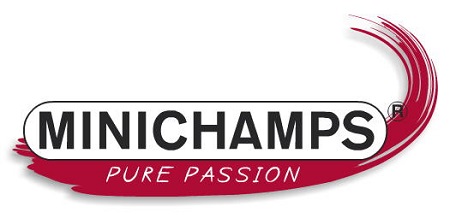
Minichamps North America
13464 SW 131st Street
Miami, FL 33186
www.minichampsna.com
Tel: (305) 971-1171
Contact: Alain Morot, Floyd Foland
Alain Morot, Director of Operations, Minichamps North America
If you are not familiar with the Minichamps brand, you should be. Just as Mercedes Benz, BMW and Porsche have become the
de facto standards amongst the German automotive market, so too has Minichamps in the diecast industry, where these very same leveraged brands take on added meaning to collectors, world over. In a relatively short period of time, Minichamps has risen to a level of par excellence, thanks in part to a savvy business model many have envied but few have replicated. And, in a climate of growing economic uncertainty, Minichamps continues to blaze ahead, daring their competitors to keep up or drop back while they themselves take the hairpin curves at full speed.
Recently, we were privileged to conduct an email interview with Alain Morot, head of Minichamps North America, which is located in Miami, Florida, and serves as the US counterpart to Minichamps Germany. In this eye opening
tete-a-tete, Mr. Morot sheds new light on the success story that continues to propel their growth and offers added insight into the marketing prowess of this diecast giant.
The Motor Pool (TMP): Could you tell us about your background and how you came to be associated with Minichamps?
Minichamps (MIN): I was born and raised in Le Mans, France, 59 years ago. Initially, I studied and worked -- quite successfully -- in the Luxury International Hotel Management business. Moreover, I traveled and lived in various countries during this timeframe, including different areas in the Middle East, before finally settling down in the USA in 1982. Thereupon, I embarked upon a complete career change, which began with the importation of a model vehicle line known as Majorette Toys. At that time, Hot Wheels was the dominant brand in the toy business, since Matchbox, its fiercest competitor, had gone bankrupt in the United Kingdom where it was based. Over the past 27 years, my experience within the diecast industry has continued to flourish. I was first involved in the mass-market toy business. Gradually I moved into the hobby sector with the launch of Morotoys, Inc., which eventually became Morotsport, Inc. During this period, I was responsible for introducing several new lines into the US market including Majorette, Solido, Rextoys, Vitesse, Onyx, Best, Bang, NZG, Eligor, Top Model, Jouef, and Minichamps, as well as some plastic kits and sporting goods lines. Along the way, I was an integral member of both Minichamps USA, Inc. and Gateway Global USA, Inc. For the past eight years, I have run Minichamps North America, Inc., which imports and exclusively distributes the Minichamps, Kyosho, BBR, Bauer, and Amalgam brands.
I became associated with Minichamps during its humble beginnings in the late 80's when Paul G. Lang of 'Danhausen' took over the AMR brand in France. At that time, they were assembling their own kits in Germany under the Century label. They soon started Paul's Model Art, first under the brand MAX Models, which soon transitioned to the name Minichamps. Back then, there were relatively few decent models for the hobbyist to choose from. Minichamps sparked a revolution in model making by being the first diecast maker to go to China to create better, fully assembled models for the growing promotional car manufacturer sector, which took hold in Germany with the likes of Mercedes Benz and Porsche.
Ironically, my grandfather was manufacturing 1/10 scale Citroen models before WWII, under exclusive license from Andre Citroen in Paris. Back then it was called '
Le jouet Citroen. Later, after the War, they moved the Facility to a bigger site located outside Paris, which became known as 'Compagnie Industrielle du Jouet' (CIJ).
TMP: Who exactly is 'Paul' in the name Paul's Model Art Minichamps, and why does the company maintain the lengthy name after all these years?
MIN: Paul's Model Art or PMA derives its name from its founder, Paul G. Lang, of Aachen Germany. PMA is the shortened equivalent.
TMP: Many collectors consider Minichamps the 'Rolls-Royce' of diecast collecting. Why do you think collectors are so passionate about your business?
MIN: Comparing us to Rolls Royce is a good analogy. With close to 20 years in the business, collectors can now enjoy the same quality, accuracy and proper attention to detail with each new product we bring to market, much as they would with an actual Rolls Royce automobile.
A New Vehicle in the Making
TMP: How do your counterparts in Germany decide upon which vehicle would make for a good diecast replica?
MIN: What vehicle constitutes a good diecast replica? You could say it's a secret recipe of sorts. Having said that, some of the ingredients that go into the decision-making process are popularity, originality, and desirability of the vehicle in question. The rest takes care of itself.
TMP: Do you play a part in the selection process of new replicas?
MIN: Absolutely. My counterparts overseas and I are consulted on a regular basis to determine whether it makes sense to replicate a particular street- or racing car. If we perceive that a certain car would not lend itself well to the replica market, then we take a pass.
TMP: How does the North American diecast marketplace differ from the European marketplace?
MIN: While we always strive try to find a suitable vehicle that would satisfy the global market, the North American collector tends to adhere to the 'bigger is better' adage, usually opting for a larger 1/18 scale replica. Europe, on the other hand, tends to prefer 1/43 scale replicas, which, despite its smaller size, also sells extremely well in the North American market.
TMP: There was a time when Minichamps considered entering both the NASCAR and aviation diecast markets. What were the reasons that led to Minichamps staying away from these lucrative markets?
MIN: The market does not need duplication of effort. Our former partner, Motorsport Authentics, does a very good job in the NASCAR category. Furthermore, we have a program in place for the next five years that is already nearing full capacity, so there's no need for us to enter a new market such as aviation.
TMP: Are there sectors of the diecast market you are considering entering within the foreseeable future?
MIN: That's the million-dollar question. We will never write off any single sector, since no one can be absolutely certain which category will slow down or pick up in sales going forward. We like to keep our options open.
TMP: Each year, Minichamps announces an ambitious release schedule that contains several dozen new replicas at the beginning of the year, and scores more throughout the year. Can too much of a good thing actually be harmful to your business model?
Exotic Race Cars Have Formed the Backbone of Their Business
MIN: Despite facing a so-called 'economic slowdown', our business continues to thrive and with good reason. Collectors understand that when they buy a new model from us, a good portion of the proceeds goes into new tooling, thereby enabling us to offer even more new product further down the road.
TMP: Thus far you've modeled a couple dozen military replicas, yet for 2008 only one new product, a repaint, is scheduled for release. Should collectors take that as a sign that you may be bowing out of the military replica business?
MIN: As is the case in any industry, there are business cycles bound by highs and lows. When we started the military series several years ago, nobody dared to cast heavy 1/35 scale, highly detailed metal models, so we enjoyed a solo ride for about two years. Then came a plethora of copycats. Some were decent reproductions, others somewhat toyish in appearance. As a result, our series continues to remain very popular, even though we have fewer introductions. In the end, quality pays handsome dividends.
TMP: Unlike other diecast model makers, Minichamps does not attempt to sell to every diecast dealer. Would you say this strategy has helped to maintain the value of your products and keep the brand from being heavily discounted?
MIN: We carefully select our business partners and want to ensure that our products are treated with the same respect and integrity we lavish on them.
TMP: Many of your past products have escalated in value far in excess of their original suggested retail price, sometimes going for several hundred dollars or more. Obviously, you must be happy collectors are willing to pay a premium for your products. What steps do you take to ensure the market price of your products does not decrease in value?
MIN: It's very simple. We never produce the same model over and over again. After having invested a great deal of money into a costly set of tools, it is always very tempting for a diecast company to maximize its production efforts by continuing to churn out the same product year after year. At Minichamps, if it is not a limited edition item, per se, we limit its production to a single batch then move onto something else.
TMP: What would you say is your most successful lines in North America and can the same be said for your European counterparts?
MIN: All the lines we import and distribute are very successful although they do not necessarily cater to the same collector. We are currently introducing a new line to our mix, produced by a brand new German manufacturer called 'Bauer'. Their first offering is a 1/18 scale 1931 Bugatti Royale that features over 1,300 different parts. It will retail for around $600.00 US. Our reputation is such that after we announced the car in conjunction with just a few hi-res pictures showing off its details, we received reservation orders from our dealers that far exceeded our expectations. Needless to say, we are delighted by its reception.
The hardest part will be to supply these forecasted figures to eager collectors. The building process for these highly detailed cars is a very slow and tedious process. We may have to take delivery of two separate shipments just to relieve some of the burden on our craftsmen.
TMP: I believe that product development takes place in your Aachen, Germany, headquarters yet production occurs in mainland China. Have the recent hikes in oil, labor and other materials affected Minichamps, and could these added costs be reflected in your 2009 introductions?
MIN: The rising cost of oil, labor and raw materials are a worldwide epidemic lately and yes, like your gallon of milk or bread, Minichamps is not immune to these pricing pressures.
Steel and Glass - Several Views of the Recently Christened Minichamps Museum
TMP: I understand that Minichamps Germany recently opened a museum on their premises, which contains all sorts of Minichamps-related products from the past and present. Could you tell us a bit more about the museum and why would collectors world over would want to pay a visit to the museum?
MIN: The Museum was opened just recently. Senior management wanted it to be perfect from top to bottom, reflecting the personality and culture that goes into every model we make. Whether you are a collector or not, if you intend to visit Europe, the Museum is a unique experience that will help you better understand the world of Minichamps.
TMP: Minichamps is one of the few diecast car manufacturers to regularly attend the major hobby-related shows within North America. Why do you feel its necessary to meet and greet the same people you can just as easily do business with on the phone?
MIN: It is our way of saying thank you to our Dealers. Just as importantly, we enjoy meeting collectors during the consumer portion of many of these shows. One such event happens to occur at the upcoming I-Hobby Show, which is being held in Chicago from October 16th to the 19th.
Alain, thank you for taking the time to chat with us. We're sure that diecast collectors, world over, are immensely intrigued with your connection to Minichamps and take even greater pleasure adding each new offering to their growing collections. Much luck and continued success taking the hobby world by storm.
TMP: We're all familiar with German precision engineering and the part it plays in the development of your replicas. Why do you think marquis brands such as Mercedes-Benz, BMW, Porsche, Bentley and Jaguar, to name a few, trust Minichamps to do a superior job of replicating their vehicles?
MIN: Two words: accuracy and quality.....posted 7/29/2008
Note: Larger images of the Minichamps Museum along with images of the owner and his family can be found at the Minichamps German website: http://www.minichamps.de/default.asp?language=En
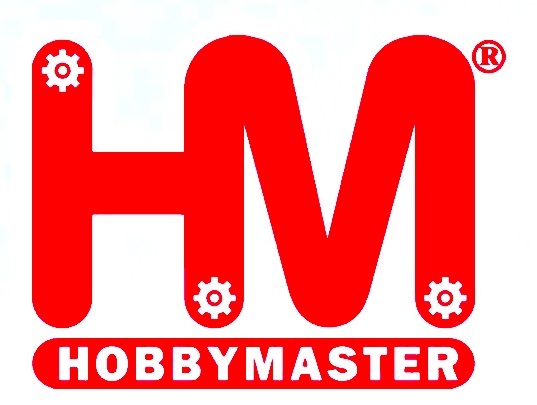
Hobby Master
Room 30, 5/F, Block A
Cambridge Plaza, 188 Sun Wan Road
Sheung Shui, N.T., Hong Kong
www.hobbymaster.com.hk
Tel: (852) 3167-7199
Contact: William Liu
William Lu, Director of Operations, Hobby Master
In today's military-themed diecast marketplace, there aren't many manufacturers that can claim to have stuck to their production schedule with almost religious zeal. Steadily churning out a diet of replica armored fighting vehicles and military aircraft for the better part of two years, newcomer Hobby Master has, by popular consensus, surpassed even the most stalwart model makers of years past to become one of the premiere makers of pre-assembled military hardware. Now poised to dominate the diminutive landscape, we thought it high time to delve a little deeper into the inner workings of this high-flying model maker, and in so doing, find out how this Hong Kong-based manufacturer has risen to the pinnacle of success in such a short period of time.
William Liu, Director of Operations for Hobby Master, was gracious enough to grant us an email interview earlier this month. Never one to shy away from the public spotlight, Mr. Liu shares his outlook on the industry and how his company fits within the diecast community at-large.
The Motor Pool (TMP): Mr. Liu, could you tell us about your background and how you came to be associated with Hobby Master?
Hobby Master (HM): Although I come from a background in media and journalism, I am an amateur plastic model kit builder for many years.
I fostered a relationship with Hobby Master approximately two years ago when the factory I now work for aimed to establish its own brand within the die-cast market. While the factory has many years of experience producing collectibles for different brands, it also saw an opportunity in the military-themed marketplace.
TMP: How do you see Hobby Master's fit within the diecast military market?
HM: Hobby Master is rather well known as a company that is willing to develop less 'main stream' subjects. This fits very well within the diecast military market where there are already far too many redundant products available to collectors.
TMP: How do you decide upon which aircraft/ ground combat vehicle would make for a good diecast replica?
HM: When deciding on a particular subject, the first thing I will look into is its market potential and the projected excitement we feel it will bring to the market. I believe collectors expect new subjects rather than very popular subjects that have been done over and over again by other manufacturers.
Certainly we believe it is vitally important to understand the expectations and needs of the collectors we serve.
TMP: What types of vehicle/ aircraft might not lend themselves well to the diecast market?
HM: As I alluded to earlier, we believe collectors have become bored with subjects that have been replicated time and again. Hence, subjects such as a 1:72 scale Zero or Mustang will have little appeal in today's market.
Also, average quality items that might have done well at retail a few years ago tend to be poor sellers in today's market. People are more concerned with quality and accuracy than ever before. They are willing to pay a premium if they are getting a higher quality replica.
TMP: Are you fearful that you could saturate the diecast market by offering multiple repaints of the same product?
HM: Yes, this is an important consideration for us. Space has become a problem for many collectors and people are getting tired of seeing the same thing repeated.
Going forward, our aim is to produce less versions of a particular subject to avoid over saturation. Unfortunately, this strategy inevitably pushes up the unit price of each subject we do produce. Having said that, we believe that quality is more important than quantity now and in the future.
Tanks for the Memories: An M-24 Chaffee Light Tank
TMP: Thus far you've modeled military aircraft and combat vehicles. Do you see a time when your company might compete in other areas of the diecast market, such as classic cars, race cars or automobiles?
HM: We have no such plans in the short term. The automobile and racing markets are already far too saturated for a new competitor to step in. On the other hand, there is a possibility that we would produce civilian aircraft in the not-too-distant future.
All in all, I think that by 'focusing' on what we are currently doing is of the utmost importance to us.
TMP: Why do you feel your company has a leg up on the competition?
HM: Our group has its own production facility, which is critical in helping us make and deliver our products on time. Furthermore, our engineering and production team have many years of experience in manufacturing similar types of products.
Finally, our close connection with collectors helps us to gain added insight into the needs of the collectors.
TMP: Do you foresee a time when other diecast manufacturers would want to collaborate with you by manufacturing their products at your facility?
HM: We have already collaborated with a British-based company to develop a special series. Moreover, our factory is currently producing replicas for a well-known Japanese brand. While these relationships are beneficial, we believe that the promotion of our own brand is of the utmost importance to us as well as our valued audience.
The F-104: Hobby Master's Most Successful Aircraft to Date
TMP: How difficult is it to train your employees to ensure the utmost accuracy in your products?
HM: Training skilled craftsmen is very difficult since most of our workers have no prior experience in modeling. Basically, our approach has become a 'learning by doing' process with close inspection of the finished product the key to ensuring accuracy and success.
TMP: Which areas of the diecast military market do you think your company will expand into over the course of the next year?
HM: We're currently exploring opportunities in larger scale armored fighting vehicle and/or aircraft areas. We recognize that space is starting to become a problem for some collectors. That said, we think that making something bigger with superior detail and workmanship and smaller productions runs is just what may be needed to gain further traction in the marketplace.
TMP: Could you walk us through the design process, from agreeing upon a weapons system to model all the way through to final production and assembly?
HM: The process consists of the following steps:
- Market Research
I handle all market research with the aim of developing the best possible product people have come to expect from Hobby Master.
- Historic Research
We consult reference books, examine historical websites and take into account expert opinions when we consider each new subject matter.
- Product Development
At this stage, a prototype is developed based upon the data points we've collected. These data points are scanned into a computer and modeled in 3-D using computer-aided programming techniques.
- Engineering and Development
This process consists of the following steps:
Anatomy of a New Build
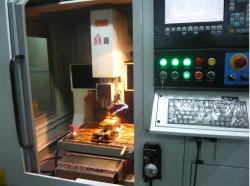
I) A-4 Data Scanning
II) Mold Development - computerized milling machine using a CAD program
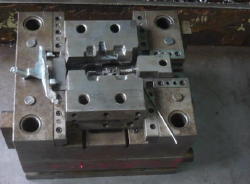
III) Mold Developed - Creation of the fuselage for our P-39 (over 1,000 pounds in weight)
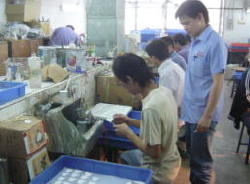
IV) Spray booth to spray individual parts - The wings of an F-104 undergoing painting
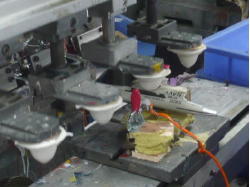
V) Tampo printing - printing of all the decorations are done by machine (an F-4 body printing using a silicon pad)
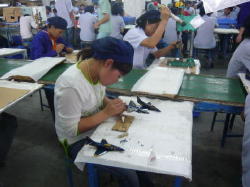
VI) Small parts assembly and touch-up

VI) Small parts assembly and touch-up
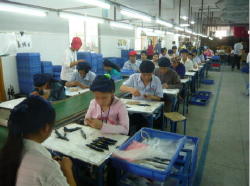
VII) Assembly Line - An A-4 Blue Angel Skyhawk being put together by one of our craftsmen
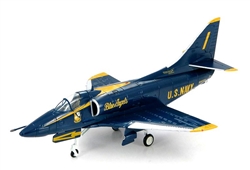
VIII) The Final Result - An A-4 Skyhawk "The Blue Angels"
TMP: Thus far, what's been the most successful product you;ve produced and why?
HM: I would have to say it is the Lockheed F-104 Starfighter. The F-104 has never been modeled in 1:72 scale before. Just as importantly, the real aircraft had an extremely large client base to draw upon from across many different nations, including Germany, Italy, and Greece, to name a few. It also occupies an extraordinary place in aviation history. All these factors have combined to make this famous aircraft a real success for us.
TMP: Thank you for taking the time to discuss the inner workings of your operation and we wish you continued success in the diecast marketplace....posted 6/21/2008
|






